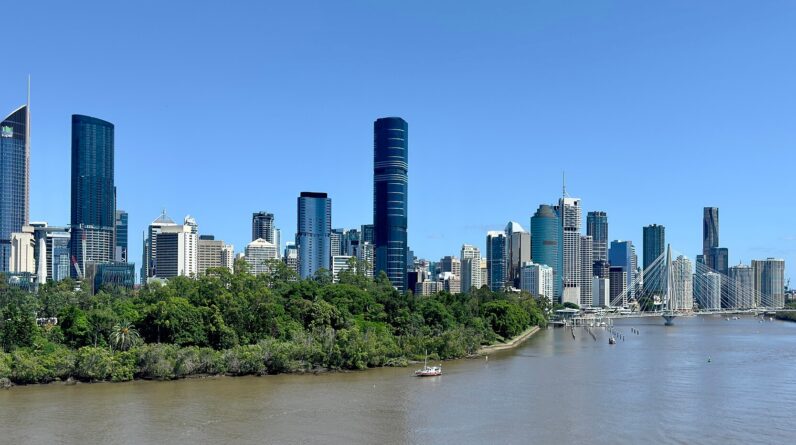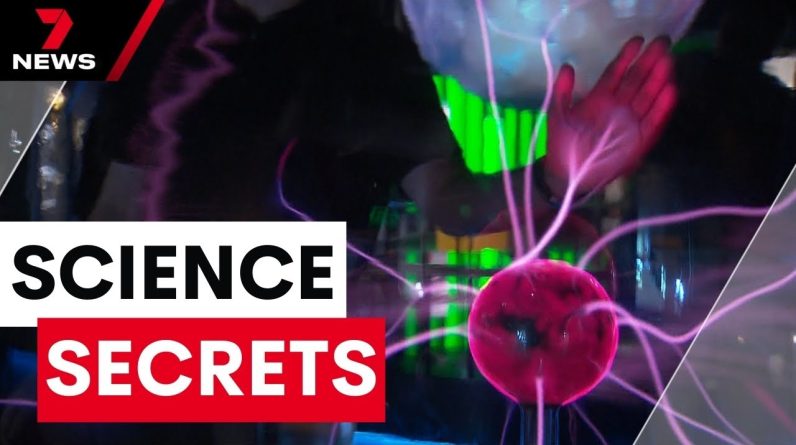It’s a rare, natural phenomenon which has one Brisbane habitat painted pink. The Boondall Wetlands have changed colour in what experts say is an algae bloom and it’s a sight you won’t want to miss.
Mysterious Pink Transformation Engulfs Queensland Wetlands
A mysterious pink transformation has overtaken the Boondall Wetlands in Queensland, Australia, leaving experts and locals puzzled. A photograph shared on Reddit captured the attention of many, depicting the wetlands now adorned with a vibrant shade of pink. While the exact cause remains unknown, speculation ranges from nearby waste management activities to a natural algal bloom.
The Brisbane City Council has pledged to evaluate the water quality, and environmental scientist Michele Burford advises caution, recommending avoiding contact with the pink water. Ongoing monitoring and research are crucial to understanding and addressing this phenomenon.
Key Takeaways
- The Boondall Wetlands in Queensland, Australia experienced a mysterious pink transformation overnight, with a section of the mangrove forest turning bright pink.
- The cause of the pink coloration is currently unknown, but it could be due to either pollution from the nearby waste management area or a natural algal bloom.
- Warmer weather and low rainfall can contribute to higher salt levels, which can cause algae and bacteria to turn pink.
- The pink water is potentially toxic, and people are advised to stay away from it to avoid skin irritation or rash. Animals should also not drink from or enter the pink water.
The Pink Phenomenon: What Happened in Queensland Wetlands
The occurrence of the pink phenomenon in the Queensland wetlands has sparked curiosity and raised questions about its origin and implications.
Boondall Wetlands in Queensland, Australia, experienced a mysterious transformation overnight, with a section of the mangrove forest turning bright pink. Speculation arose regarding the cause of this change, with some suggesting that nearby waste management areas may have polluted the waters. Others proposed that a natural algal bloom could be responsible.
The Brisbane City Council has stated that they are unaware of the cause and will assess the water quality. Environmental scientist Michele Burford mentioned that the pink coloration could be due to pink algae washed in by the tide or risen from below the surface.
Ongoing monitoring and research may be necessary to understand and prevent future occurrences of this pink phenomenon.
Causes of the Mysterious Pink Transformation
With the water quality being assessed and speculation surrounding the nearby waste management areas and natural algal bloom, the causes of the mysterious pink transformation in the Queensland wetlands remain uncertain.
The pink water located beside the Nudgee dump has raised concerns about possible pollution from the waste management area. On the other hand, some suggest that the pink color could be due to a natural algal bloom, which is more likely in hot and dry weather conditions.
Environmental scientist Michele Burford mentioned that pink algae could have been washed in by the tide or risen from below the surface. However, the Brisbane City Council has stated that they are unaware of the cause and will continue to assess the water quality. Further investigation and monitoring are necessary to determine the exact causes of this unusual phenomenon.
Duration and Potential Toxicity of the Pink Water
Interestingly, the duration of the pink water phenomenon in the Queensland wetlands and its potential toxicity are subjects of concern and require further investigation. Professor Michele Burford, an environmental scientist, stated that if the pink coloration is due to algae, it usually lasts only a few days. However, the exact duration of the pink water in the Boondall Wetlands remains uncertain.
Additionally, there is a potential for the pink water to be toxic. Contact with potentially toxic algae can cause skin irritation, dermatitis, or rash. As a precaution, Professor Burford advised people to stay away from the pink water and to wash off any contact immediately. Animals should also be prevented from drinking from or entering the pink water.
Further research and monitoring are necessary to determine the extent of toxicity and any long-term effects on the wetlands and wildlife.
Similar Occurrences and Environmental Effects
Similar occurrences of water turning pink have been observed in various locations around the world. For instance, a popular beach in Sydney, Australia, experienced a green coloration due to an algal bloom. These occurrences are often triggered by environmental factors such as warm weather, low rainfall, and elevated salt levels.
While the pink coloration itself is not expected to have long-lasting effects on the wetlands, the potential toxicity of the algae involved can have negative consequences for the environment and wildlife. Contact with toxic algae can cause skin irritation, dermatitis, and rash.
To minimize risks, it is important for authorities to assess water quality, address pollution concerns, and conduct ongoing monitoring and research to understand and prevent future occurrences. Public awareness and caution are also advised.
Council Response and Future Actions
The Brisbane City Council spokesperson confirmed that council officers would visit the site and investigate the cause of the mysterious pink transformation in the Boondall Wetlands.
The council’s immediate response was to prioritize the assessment of water quality and address any potential pollution concerns. They emphasized that pink water can occur naturally, especially in hot and dry weather conditions.
Ongoing monitoring and research may be necessary to further understand the cause of this phenomenon and to prevent future occurrences. The council also stressed the importance of public awareness and caution to minimize potential risks associated with the pink water.
Public Awareness and Minimizing Risks: What You Need to Know
To ensure the safety of the public and minimize potential risks, it is crucial to raise awareness about the mysterious pink transformation in the Boondall Wetlands and provide essential information on how to mitigate any potential dangers.
The pink water observed in the wetlands could be due to a natural algal bloom or pollution from the nearby waste management area. While the exact cause is still unknown, it is important for people to stay away from the pink water as a precaution. Contact with potentially toxic algae can cause skin irritation or rash, and animals should not be allowed to drink from or enter the pink water.
Ongoing monitoring and research are necessary to understand and prevent future occurrences. By educating the public about the risks and precautions, we can ensure the well-being of both humans and the environment.
Conclusion
In conclusion, the pink transformation of the Boondall Wetlands in Queensland, Australia remains a mysterious phenomenon. While the exact cause is still unknown, it is speculated that pink algae may be responsible for the vibrant hue.
The Brisbane City Council has pledged to evaluate the water quality and ongoing monitoring and research will be essential in understanding and mitigating future instances of this occurrence. Public awareness and caution are advised to minimize potential risks associated with the pink water.
Albion News is a great place to find informative, up-to-date news articles. We provide a wide range of unique articles that offer an interesting perspective on current events from around the world and from various different sources. You can easily search for the topics that matter most to you and explore in-depth pieces that provide insight into the issues and important debates occurring today. Albion News helps you stay informed with carefully researched and credible stories!







